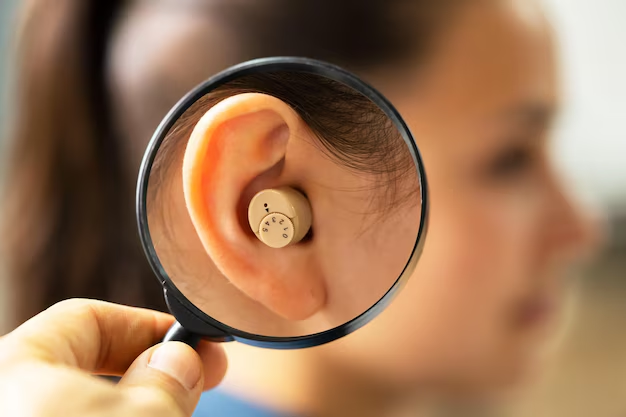Choosing the Right Hearing Aids: A Guide to Finding the Best Fit
For many individuals experiencing hearing loss, finding the right hearing aids can be a transformative experience. With technological advancements continually reshaping the landscape, knowing who makes the best hearing aids and how to choose them can be overwhelming. The aim of this guide is to help navigate the options available, highlight what to consider, and empower you to make informed choices about hearing aids.
Navigating the Hearing Aid Landscape
The world of hearing aids is vast and varied. Numerous manufacturers compete in the market, offering devices with diverse features that cater to different levels of hearing loss and lifestyle needs. Key players include brands known for innovation and reliability, each offering unique benefits and technological advancements. Here, our focus is on understanding what these options mean for you and how to assess them based on practical considerations.
What Determines the Best Hearing Aid?
"Best" is subjective when it comes to hearing aids, as different people have different needs. Here are some general factors to consider:
- Type of Hearing Loss: The degree of your hearing loss is a fundamental factor in determining the style and capabilities of the hearing aids you'll need.
- Lifestyle Needs: A person’s daily activities and environments you spend time in (e.g., work, social settings, quiet activities) can dictate necessary features.
- Technology Features: Options include connectivity (e.g., wireless, Bluetooth), advanced sound processing, noise reduction, and program customization.
- Comfort and Style: From behind-the-ear (BTE) models to invisible in canal (IIC) styles, comfort and aesthetics play a significant role.
- Budget: Costs can vary widely. Consider long-term value, as technologically advanced models may justify higher initial costs.
Types of Hearing Aids
Identifying the type of hearing aid that suits your needs is crucial. Here's a breakdown:
1. Behind-the-Ear (BTE)
Pros:
- Ease of use and handling, ideal for most types of hearing loss.
- More powerful and larger batteries.
Cons:
- Often more visible than other types.
2. Receiver-in-Canal (RIC)
Pros:
- Discreet appearance with exceptional sound quality.
- Versatile and smaller than BTE models.
Cons:
- Can be less durable in humid conditions.
3. In-the-Ear (ITE)
Pros:
- Custom-fitted to each user, making them comfortable and secure.
- Fewer feedback issues.
Cons:
- Visible in the ear, less discreet than RIC.
4. Completely-in-the-Canal (CIC) & Invisible-in-Canal (IIC)
Pros:
- Extremely discreet and almost invisible.
- Natural sound quality
Cons:
- Smaller size means smaller batteries and shorter battery life.
Features to Look For
Advanced Technology
Modern hearing aids come packed with features that make them more convenient and effective:
- Bluetooth Connectivity: Allows streaming from smartphones or TVs.
- Rechargeable Batteries: Offers convenience over traditional disposable batteries.
- Noise Reduction: Essential for busy environments or gatherings.
- Directional Microphones: Helps focus on conversations.
- Tinnitus Masking: Useful for those with both hearing loss and tinnitus.
Personalization and Adaptability
Top models offer adaptable settings that automatically adjust based on the environment, providing ease of use for those who are less tech-savvy.
Telehealth and Remote Adjustments
With remote hearing care growing, the ability to adjust your devices through an app or online platform can be a major convenience, ensuring your hearing aids are optimally configured at all times.
Tips for Choosing the Right Hearing Aid
Getting Professional Advice
- Consult an Audiologist: A professional evaluation is the first step in understanding your hearing loss and the best options available.
- Trial Periods: Take advantage of trial periods to test devices in real-world situations, allowing you to make an informed decision without pressure.
Practical Considerations
- Comfort is Key: Ensure your hearing aids fit well and don’t cause discomfort.
- Service and Support: Check the availability of aftercare and support services.
- Warranty and Repair: Consider options for warranties and repair services for peace of mind.
Common Myths and Misconceptions
My Hearing Isn’t Bad Enough for Hearing Aids
Hearing aids can help people with mild to moderate hearing loss as well, improving the quality of life and communication.
All Hearing Aids Are the Same
There’s a vast range of technology and personalization in hearing aids, and not all are suitable for every type of hearing loss.
I’m Too Young for Hearing Aids
Hearing loss affects people of all ages, and early adaptation can help prevent further deterioration and social isolation.
Summary of Key Considerations
📝 Quick Tips for Choosing Hearing Aids
- Assess your routines and daily environments to determine important features.
- Consult professionals to customize your selection based on your hearing needs.
- Test several models to compare comfort and functionality.
- Consider future needs to avoid frequent replacements or upgrades.
- Look into support services offered post-purchase, such as adjustments and maintenance.
🎯 Conclusion
Choosing hearing aids is a deeply personal journey, and what works perfectly for one individual may not suit another. By addressing unique needs, exploring options, and utilizing professional guidance, you can find a solution that enhances your quality of life. Remember, the right choice is the one that best aligns with your hearing, lifestyle, and comfort preferences. Ultimately, the aim is to ensure that you remain connected and engaged with the world around you.

Related Topics
- a Plus Hearing Aid Centers
- a Real Pain Showtimes Near Centerville
- Are Airpods Bad For Your Ears
- Are Apple Second Generation Airpods Hearing Aids
- Are Audien Hearing Aids Just Amplifiers
- Are Costco Hearing Aids As Good As Others
- Are Costco Hearing Aids Good
- Are Hearing Aid Domes Interchangeable
- Are Hearing Aid Subscriptions Worth It
- Are Hearing Aid Tax Deductible